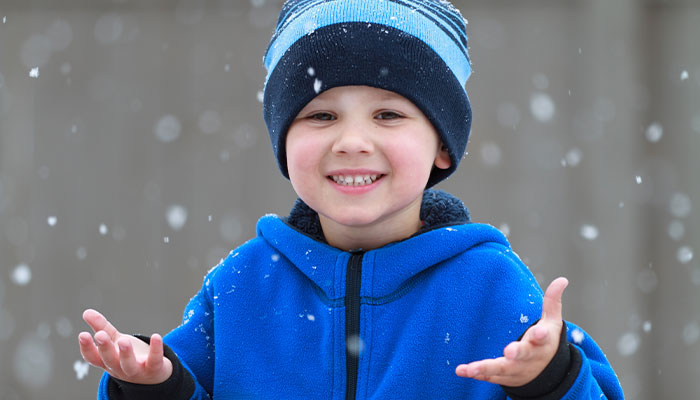While we believe that the books and resources recommended may be of value to you, keep in mind that these are suggestions only and you must do your own due diligence to determine whether the materials are appropriate and suitable for your use. PNC has no sponsorship or endorsement agreement with the authors or publishers of the materials listed.
WEATHER

Let It Snow!
Children will observe the properties of snow.

Lesson Objective
The children will learn about snow, how it forms, and how it melts.
Science
What You'll Need
- Snow
- 2-gallon buckets – 1 per 8 children
- Plastic cups – 1 per child
- Permanent marker – 1 (teacher use)
- Scoops – 1 per 2 children
- Sand rakes – child size – 1 per 2 children
- Empty sand table or basins
What To Do
Note: This lesson is designed based on real snow being available. If real snow is not available, perform the activity using finely chopped ice; it will be similar to the consistency of snow. You can make pretend snow for the children to make a picture with (see Explore, Extend, & Integrate).
- Talk with the children about what they know about snow; what it looks like, feels likes, smells like (see Did You Know?).
- Tell the children they will be investigating snow.
- Write each child’s name on a cup and distribute them.
- Have the children pack some snow into their cups until full.
- Ask the children to place their cup of snow anywhere in the classroom.
- Put the remaining snow in the sand table or in basins. Allow the children to use the scoops, rakes, and cups to play with the snow (see Guiding Student Inquiry).
- Have the children observe what happens to the snow placed in the cups around the classroom (see Guiding Student Inquiry).
Resources
Home School Resources
Home educators: use these printable lesson PDFs to teach this lesson to your home schoolers. They're available in English and Spanish.
Content Provided By
Common Core State Standards Initiative – These lessons are aligned with the Common Core State Standards ("CCSS"). The CCSS provide a consistent, clear understanding of the concepts and skills children are expected to learn and guide teachers to provide their students with opportunities to gain these important skills and foundational knowledge [1]. Visit the CCSS



